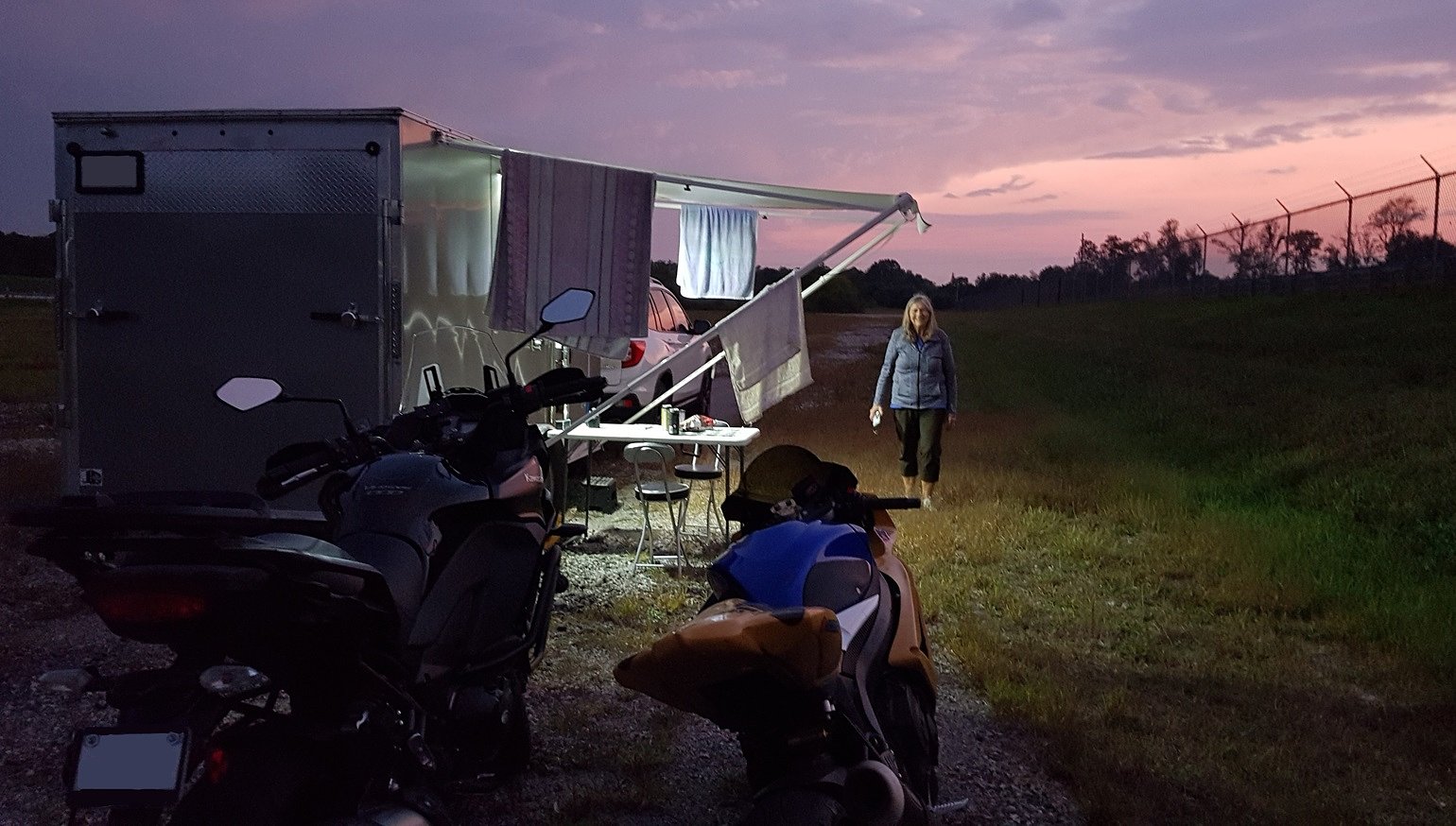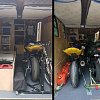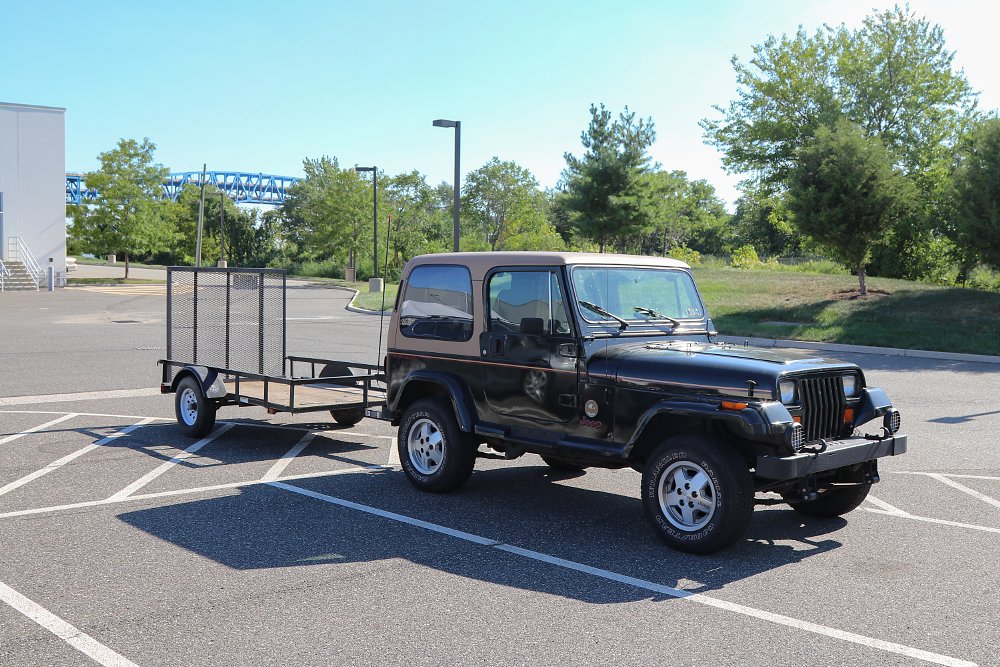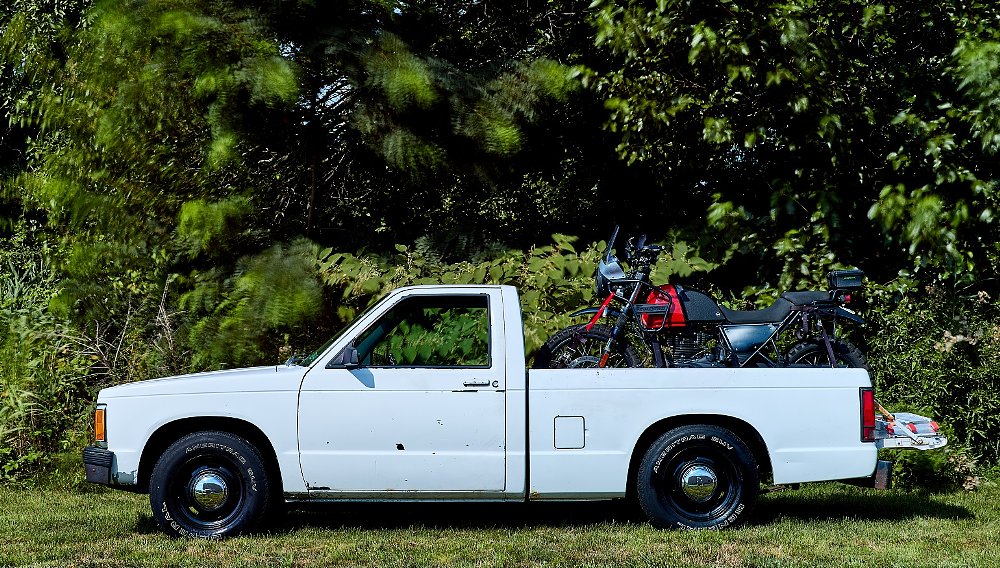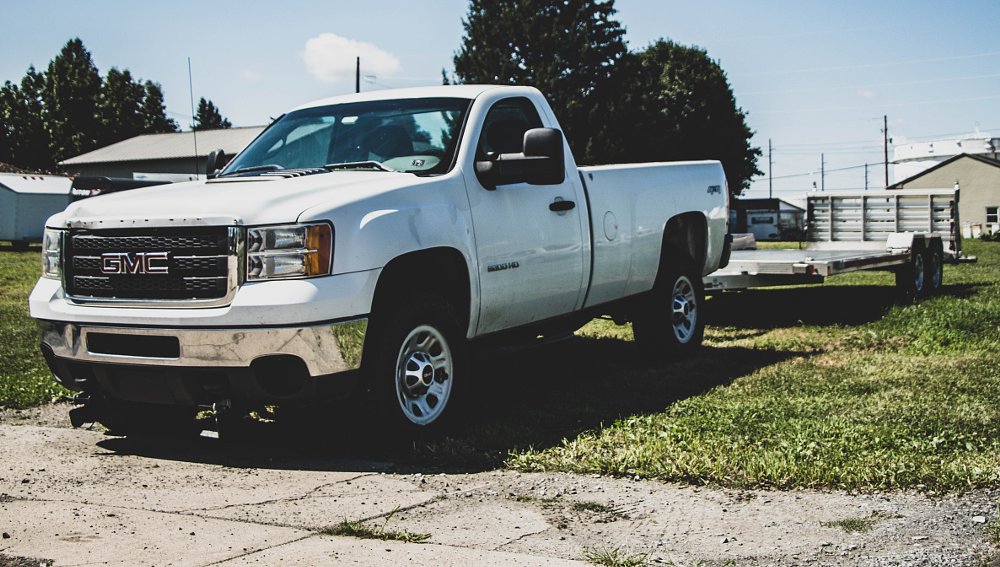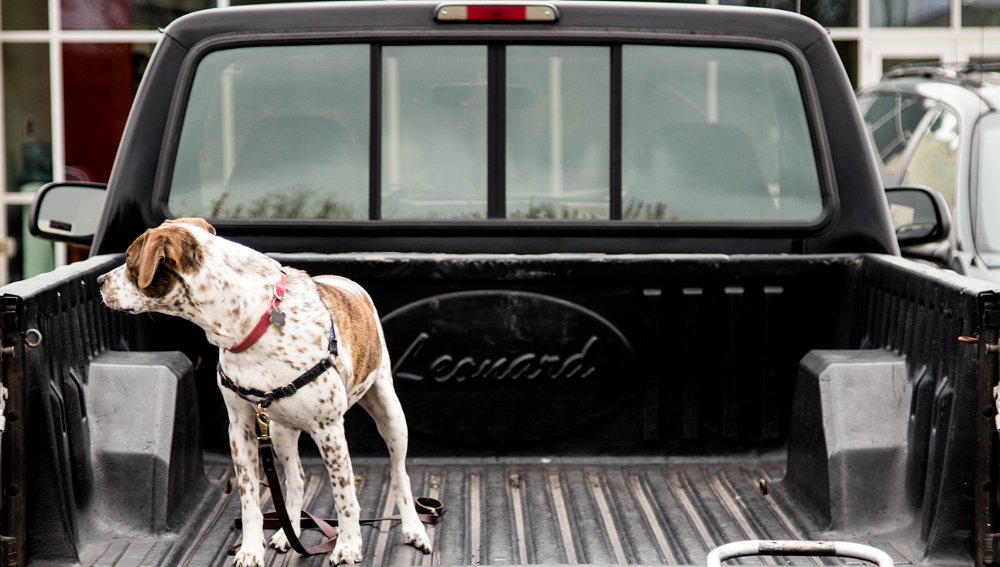When my partner, Peter, added track days to his riding repertoire, he hauled his 2008 Suzuki GSX-R750 on an open trailer and pitched a tent on the tarmac beside it in the pits. Not the most comfortable sleeping option, particularly the trek to the restroom in the middle of the night, sometimes in the rain.
Tired of that situation, Peter decided to up his game and find a more comfortable solution to his overnight stays and, at the same time, something we could use as an off-grid camping base for street and dirt bike riding getaways. After extensive research, he realized that to have something that was economical, efficient, comfortable, and suited his needs, he would have to build it himself.
Enter the custom-built moto-hauler camper
He chose the option of converting a six-by-12-foot enclosed utility trailer that is six and a half feet tall in the interior. Then he sourced the components needed to convert the empty trailer to hold two motorcycles, a fold-down queen-size bed (with the bikes removed), a seven-gallon fresh water dispenser, and a portable cassette toilet. Two 100 W solar panels and a 100 Ah lithium battery power the 2.7 cubic-feet 12 V/120V fridge and a 700 W microwave. Each of these had to be carefully measured to fit into the space.
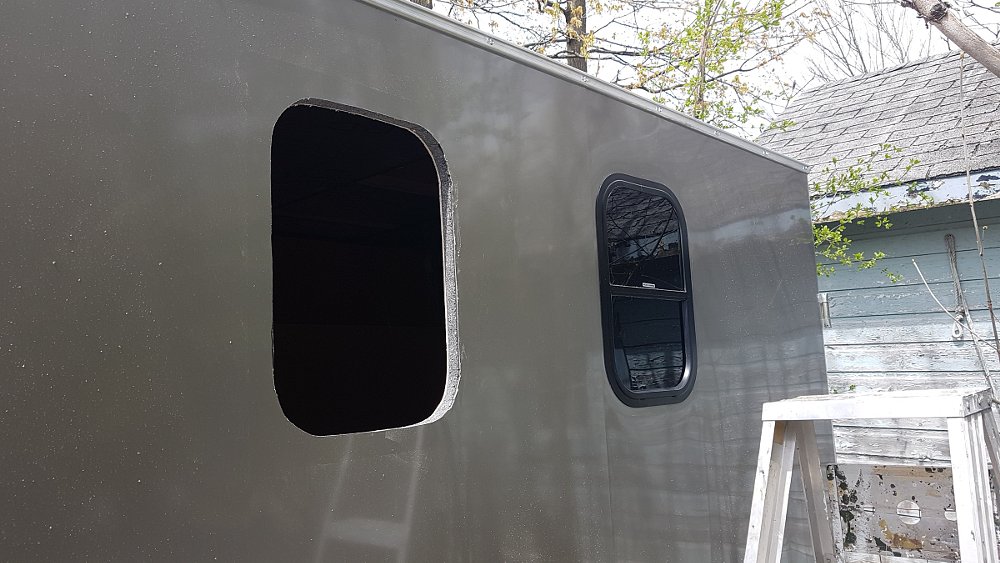
This was the first time Peter had worked with solar, so to complete the wiring diagram, he enlisted the advice of a neighbor who powers his house partly with solar.
Then the hard work began. He built structural supports for the solar panels and a ceiling vent fan. Plywood interior panels were removed to insert insulation and wiring. He cut holes in the side and door of the trailer and installed three windows. With panels back in place, the commercial grade polyvinyl garage flooring was laid down, also covering the ramp door. Extra D-ring tie-down anchors and chocks were put into place. A friend machined plates so that chocks could be put in and out without going under the trailer.
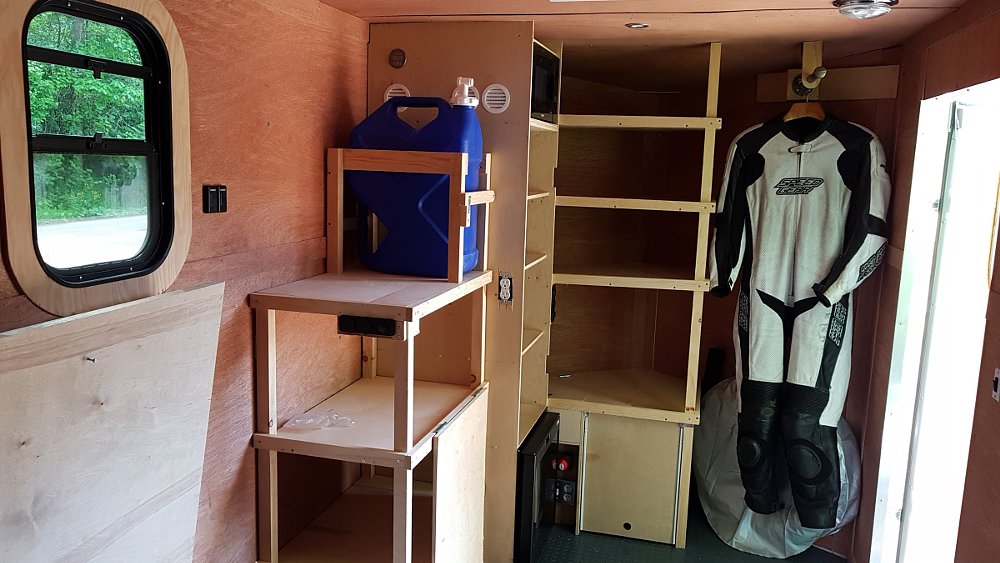
He designed an ingenious system for a large fold-out storage box to hold gas cans, the generator, and rain tires for track days. Together with a fold-out frame, this becomes the base for the bed. Two custom-sized mattresses store neatly out of the way in the ceiling, but when lowered, form a comfortable queen-sized bed. He built a fold-out table and plenty of storage space, interior and exterior lights, USB charging ports, and installed an awning on the outside.
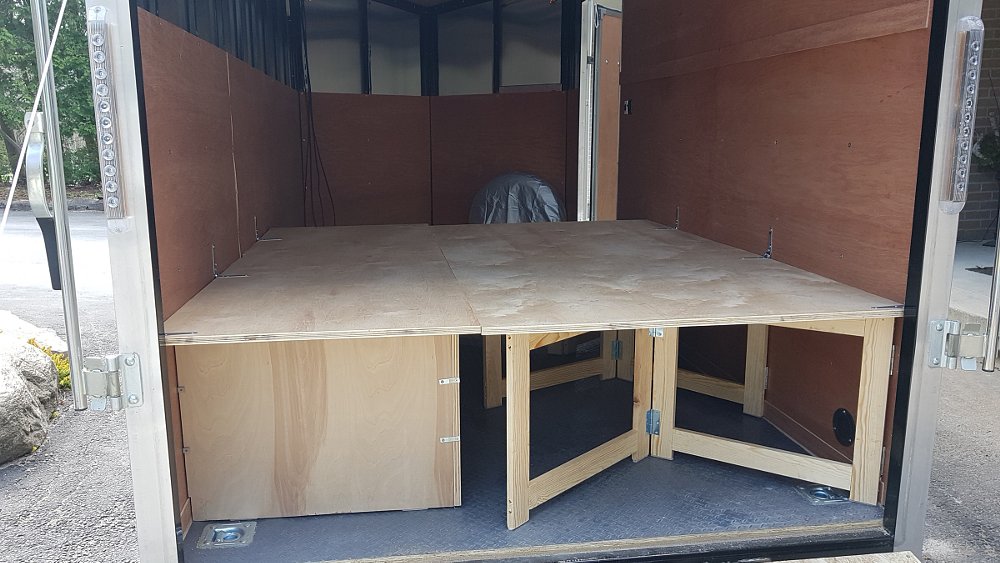
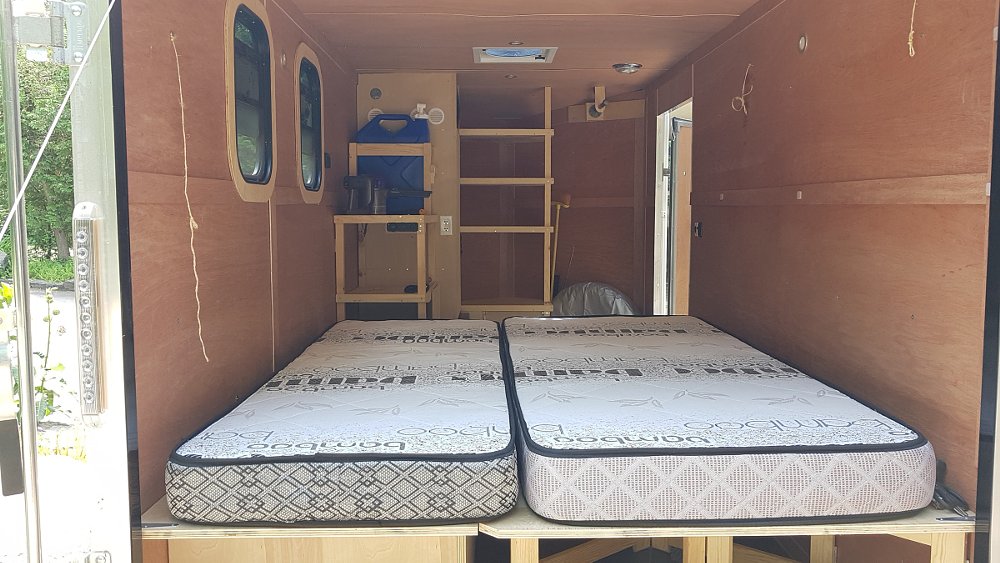
Starting the project in the spring of 2021, the converted trailer was ready to roll for the summer track season at Calabogie Motorsports Park in Ontario, about a 3.5-hour drive from home. The trailer was a game-changer for Peter in terms of comfort and convenience. After a year, he decided to make some modifications. He exchanged the one chock for a Pit Bull trailer restraint, added a 2,000 W inverter, trailer brakes, and a Andersen weight distribution hitch.
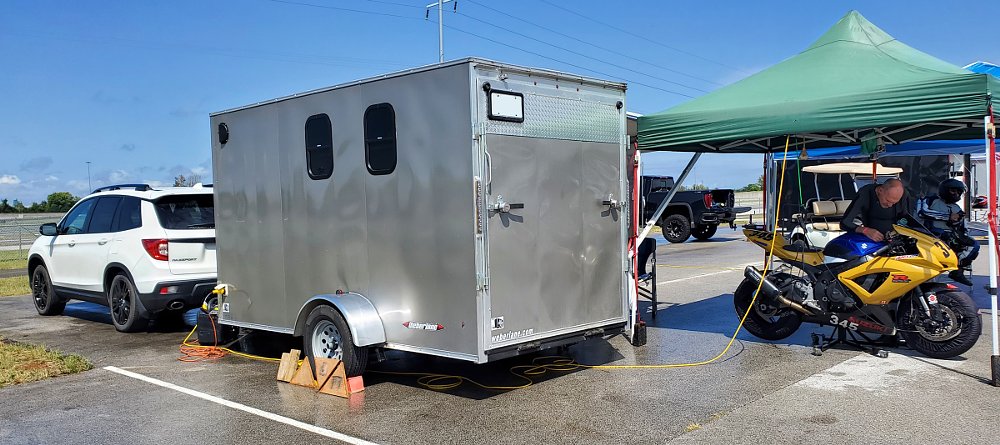
Taking the trailer on the big road trip
When Peter signed up for two track days in September at the NCM Motorsports Park at the National Corvette Museum in Bowling Green, Kentucky, it seemed like a good time for me to tag along to experience the Tail of the Dragon and the Blue Ridge Parkway. This was the first time the trailer was fully loaded with two bikes, (the Gixxer and our 2017 Kawasaki Versys 1000 two-up touring bike), two people, and all the gear needed for a two-week track and camping and riding holiday.
The solar panels are permanently mounted on the roof, so they're charging the battery all day. That was enough to power the small refrigerator Peter uses when he travels alone, but for the two of us we added an electric cooler to carry more supplies and the solar panels weren't sufficient for both. We were able to charge the battery when we stopped for the night and in the morning we continued on to the National Corvette Museum.
We were early at the track and found a good place to set up. With the bikes safely stowed under a canopy, generator on standby to power the tire warmers and microwave, the awning extended for our outdoor dining and relaxing area, and the bed made, we were set up for the next couple of days. As the other riders started to fill the pit area with an assortment of vehicles, I noticed that our trailer was unique. There were plenty of big RV toy haulers, open and basic enclosed trailers, and a few tents, but nothing like ours. Peter got a number of compliments from other riders on the efficiency of the interior layout.
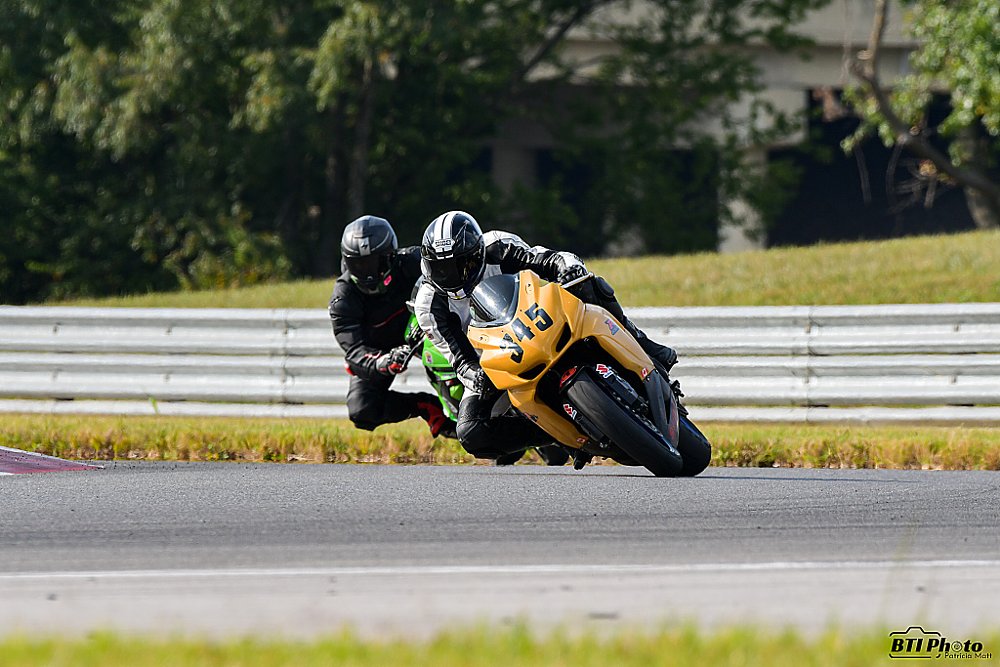
Over the next two days, Peter had a blast riding the track, even though it rained a couple of times and he had to do a quick switch to rain tires. He was impressed with how well the owners of Fast Line managed the event and he took advantage of the coaching they offered.
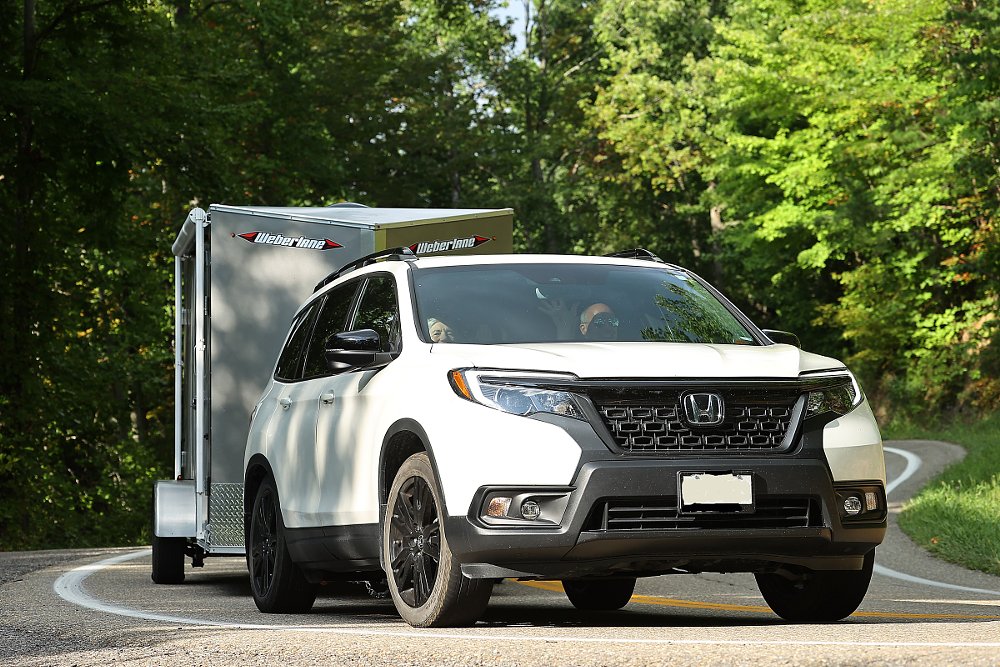
Track days over, we moved on to the next stage of our travels: exploring some bucket-list riding roads. The most direct route to the Iron Horse Motorcycle Lodge in North Carolina took us along the famous Tail of the Dragon. So, our first time on the Dragon, we were pulling the trailer. Peter was pleased with how it handled the twists and turns and was happy to have spots to edge over so as not to hold up riders. At Iron Horse lodge, we were given a site in the row of big RVs, with electric hookup and a place to empty the toilet. It was the perfect base for a few days of riding.
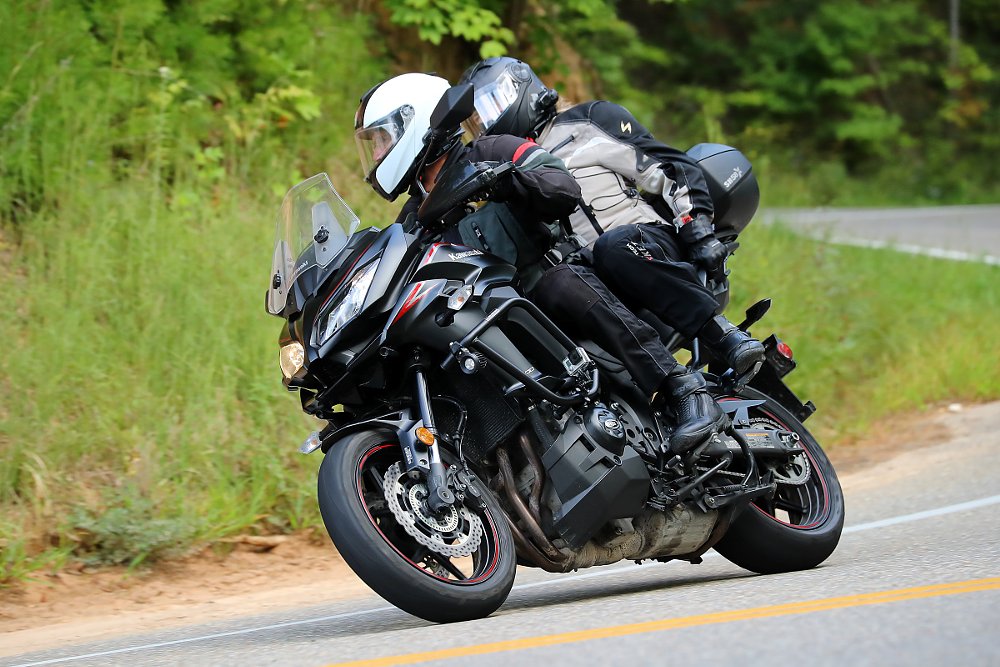
We rode the Tail of the Dragon, Foothills Parkway, Tennessee Scenic Parkway, and a bit of the Blue Ridge Parkway. A portion of the Cherohala Skyway was closed where rain had washed out a section of the road but we were able to ride 90% of it and had the road almost to ourselves. We rode hundreds of miles snaking up and down and around tree-covered mountains, along valleys, beside rivers, through small rural communities, and past about a hundred churches with neat white steeples. We saw the Tree of Shame at the Dragon and didn't contribute parts to it, and after a stop at the gift shop, Peter can now say, "Been there, done that, bought the T-shirt." I do have small dispute with the Dragon's claim of 318 curves in 11 miles, however. I counted three times and couldn't get over 200 curves, even counting wiggles in the road. If anyone wants to prove me wrong, I'm happy to go back and count again!
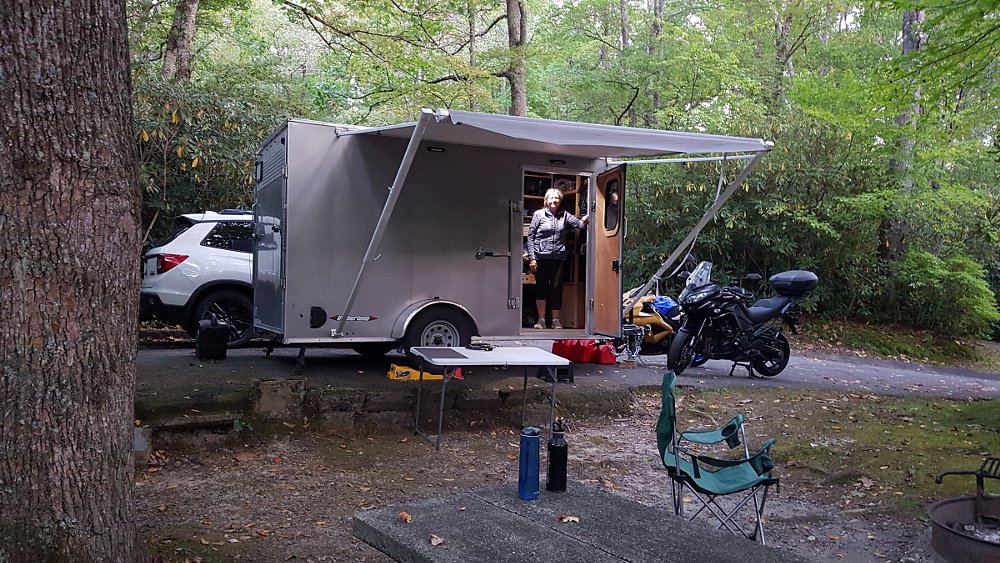
The camper continued to meet all our needs. At the Julian Price Campground on the Blue Ridge Parkway we were completely off the grid with no power or Wi-Fi. Our campsite, set in a heavy canopy of trees, was not the best for solar. But we had no immediate neighbors and the camp warden said it was fine to run the generator to cook dinner and to boost the battery. I wasn't prepared for the chilly temperatures in the mountains and was very grateful for our small Mister Buddy propane heater. Running it for 15 minutes before bed is all it took to keep us comfortable all night.
Our last campsite of the trip was Devils Backbone Campground. Owned by a brewery, it's a short walk to the restaurant brewpub. Our site was not far from the bathhouse with hot showers, where surprisingly we were able to connect to Wi-Fi. We fired up the generator again to use the microwave and hot plate to make a nice dinner. There are definitely other options for cooking. Lots of people cook over the campfire or have propane cookers, but we are good with our system. We started out with pre-prepared frozen dinners as well as fresh food and stocked up along the way.
Crossing the border at Buffalo, N.Y., back into Canada, the Canadian customs official was not so much interested in the motorcycles but asked a lot of questions about the trailer.
"I just want to make sure it's not stolen," she said. Really? Is that a thing, bringing stolen trailers across the border to Canada?

At the end of the trip, we agreed that the trailer is a great base for our camping and riding holidays. And at a very reasonable price. Total cost of the build with all the components, including taxes, was $7,400 (10,000 CAD) plus $4,670 (6,300 CAD) for the cost of the trailer, including tax.
If there is anything that could be improved, it's the capacity of the solar and the battery, but the current setup is fine for track days and for our getaways. However, Peter is back at the drawing board designing the next level up — a small toy hauler, with separate garage, a shower, propane stove and more. A much bigger and more expensive undertaking, so it remains a pipe dream for now.

 Membership
Membership

